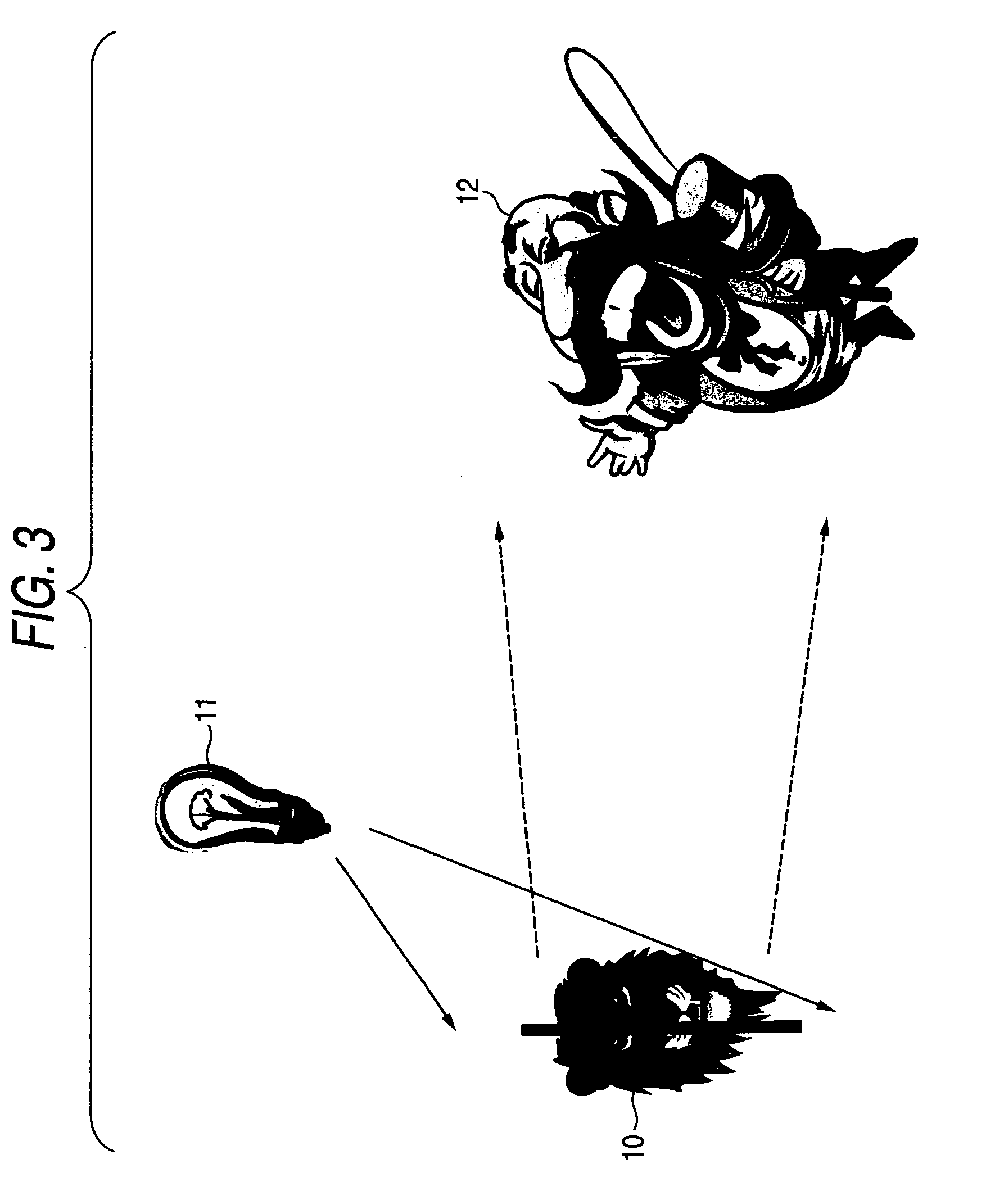Silver halide holographic sensitive material and system for taking holographic images by using the same
a technology of holographic images and silver halide, which is applied in the field of silver halideholographic sensitive materials, can solve the problems of difficult to say, difficult to get one picture, and the stereoscopic portrait view as three-dimensional image is widely accepted, and achieves the effect of low cost and high customer satisfaction
- Summary
- Abstract
- Description
- Claims
- Application Information
AI Technical Summary
Benefits of technology
Problems solved by technology
Method used
Image
Examples
first embodiment
[0166] A silver halide-holographic sensitive material according to the first embodiment of the invention has on a support at least one silver halide emulsion layer, especially preferably at least two photosensitive silver halide emulsion layers including at least one green-sensitive silver halide emulsion layer having its absorption maximum in a range of 500 nm to 600 nm and at least one red-sensitive silver halide emulsion layer having its absorption maximum in a range of 600 nm to 750 nm. Although at least one blue-sensitive silver halide emulsion layer having its absorption maximum in a range of 350 nm to 500 nm may be provided additionally, the green-sensitive silver halide emulsion layer and / or the red-sensitive silver halide emulsion layer can double as the blue-sensitive silver halide emulsion layer. The expression “an emulsion layer has its absorption maximum in a range of 500 nm to 600 nm” means that an emulsion layer is spectrally sensitized with a spectral sensitizing dye...
second embodiment
[0171] A holographic silver halide photosensitive material according to the second embodiment of the invention has on a support at least one silver halide emulsion layer. Silver halide particles in the silver halide emulsion layer are spectrally sensitized with at least three varieties of spectral sensitizing dyes. And the silver halide particles spectrally sensitized with three varieties of sensitizing dyes preferably have two spectral absorption maxima in at least the wavelength region of 500 nm to 550 nm and the wavelength region of 600 nm to less than 700 nm, respectively. It is preferable by far that their spectral absorption maxima are in the 510-540 nm region and in the 620-680 nm region. The spectral absorption maxima are determined by measuring spectral transmittance of the photosensitive material with a general spectrophotometer, wherein the air is used as the reference. The number of spectral absorption maxima may be three or more, and there may be maxima of spectral abso...
third embodiment
[0174] A holographic silver halide photosensitive material according to the third embodiment of the invention has on a support at least one silver halide emulsion layer. The silver halide emulsion layer contains low molecular-weight gelatin having a weight average molecular weight of 3,000 to 50,000 and gelatin having a weight average molecular weight of 80,000 or more. And it is preferable that the weight average molecular weight of the low molecular-weight gelatin contained therein is from 5,000 to 30,000 and that of the other gelatin is 100,000 or more. In general, gelatin is a mixture mainly containing α-chain gelatin having a molecular weight of 95,000, β-chain gelatin having a molecular weight of 190,000 and γ-chain gelatin having a molecular weight of 285,000. The weight average molecular weight of such gelatin can be determined by a light scattering method or a centrifugal separation method. Alternatively, it is convenient for determination of weight average molecular weight...
PUM
| Property | Measurement | Unit |
|---|---|---|
| number average diameter | aaaaa | aaaaa |
| thickness | aaaaa | aaaaa |
| emission wavelength | aaaaa | aaaaa |
Abstract
Description
Claims
Application Information
 Login to View More
Login to View More - R&D
- Intellectual Property
- Life Sciences
- Materials
- Tech Scout
- Unparalleled Data Quality
- Higher Quality Content
- 60% Fewer Hallucinations
Browse by: Latest US Patents, China's latest patents, Technical Efficacy Thesaurus, Application Domain, Technology Topic, Popular Technical Reports.
© 2025 PatSnap. All rights reserved.Legal|Privacy policy|Modern Slavery Act Transparency Statement|Sitemap|About US| Contact US: help@patsnap.com



